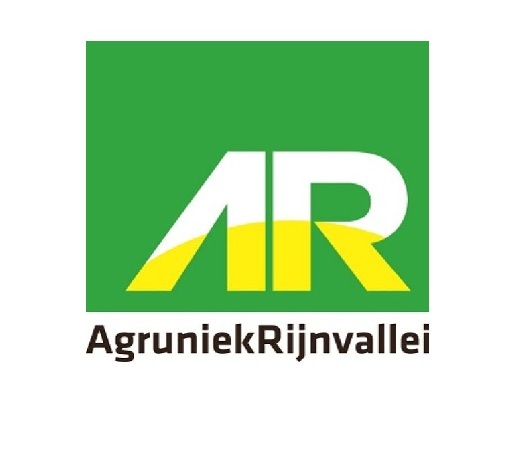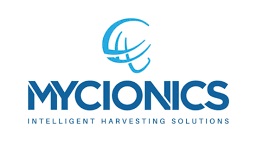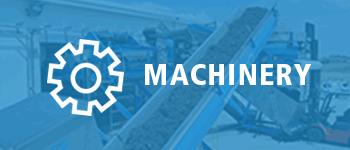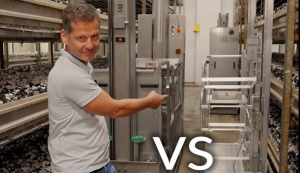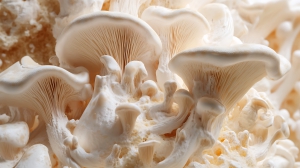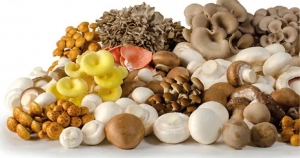GrowTime’s Newton and Pascal harvesting lorries offer mushroom farms reliable, durable tools that boost efficiency and reduce maintenance.
At GrowTime, we've compared our two top models – Newton and Pascal – to help you decide.
The Newton model is lightweight and budget-friendly, ideal for farms with narrow aisles and tight spaces.
The Pascal is built for larger farms and heavier loads, offering extra comfort and performance in more demanding conditions.
So whether you prioritize flexibility in narrow aisles or need a heavy-duty solution for larger farms, we've got you covered.
Want to see how they differ in action?
Watch the video here and decide which one will be the best fit for your mushroom farm!
Renewable and sustainable energy reviews
Sustainable agriculture holds a key role in attaining a balanced approach to increase productivity, especially for growing industries like mushroom production.
Producers like China, the USA, and the UK lead the race for global mushroom production, while India lags with 0.18 million tonnes of output. However, ensuring the sustainability of the mushroom industry is needed for environmental conservation, long-term economic viability, and the overall well-being of communities dependent on this agricultural sector. This review focuses on the recent trends in waste and carbon footprint generation from the mushroom industry, emphasizing spent mushroom substrate and utilities like electricity.
Moreover, this review extensively covers recent advancements in research concerning incorporating innovative technologies such as AI and precision agricultural technologies like Internet-of-Things (IoT) and big data and contemporary approaches, such as solar energy in mushroom farming. The challenges the mushroom industry faces, and policies to tackle them and promote sustainable agriculture are also thoroughly explored. The review concludes that the carbon footprint generation and waste release from mushroom production can be mitigated using AI, IoT, big data, machine learning, integrated sensors, etc., by increasing production efficiency and optimizing processes.
Conventions such as circular economy, conventional energy substitution, carbon credit, and carbon capturing can also alleviate carbon emissions and carbon footprint. Therefore, this will allow the mushroom industry to align with Sustainable Development Goals 7 (affordable and clean energy) and 13 (climate action). Moreover, there is an urgent need to refine the schemes and provisions to make mushroom cultivation a sustainable agricultural sector.
Read the full article here on Science Direct.
'As a mushroom sector to solve our own problems'
From the production of healthy food to attention to animal and plant health, from managing a beautiful and diverse landscape to contributing to a healthy economy: Limburg's farmers and horticulturists literally keep the province healthy. Today a conversation with entrepreneur Gerard Sikes from Ysselsteyn, who is well on his way to climate-neutral mushroom production.
Sikes (49) grew up on an arable farm, his wife Karin (49) on a mushroom farm. In 1988 they started cultivating mushrooms together.
'A nursery was for sale, but we could also have bought a sandwich shop or opened a bicycle shop,' says Sikes. 'What matters to us is doing business together.'
Every morning, around eight o'clock, the couple sits together at the table to discuss all current matters and the day ahead. 'A healthy relationship is the basis for our company. My wife gives feedback, is my complaint and teacher.'
Source: Nieuw Oogst (article is in Dutch)
The influence of straw on your composting process
Straw, horse manure and hay are the raw materials that have the most influence on the mushroom production process. Its structure affects the composting process. Its fibers (i.e. celluloses, hemicelluloses and lignin) are important carbon sources. The mycelium needs hemicelluloses and lignin for growth during the spawn run and case run phases (vegetative phase). In the so-called generative phase, from pin outgrow to mature mushrooms, celluloses and hemicelluloses are needed. Mushroom substrate has to undergo certain process steps. For the phase I composting process these are the so-called biological and chemical steps. During the phase II process the conversion of ammonia and the creation of selectivity make up the next step. During the phase III composting process the final step is mycelium development. Straw (or horse manure, hay) has a big impact on all these process steps.
Please read the full article on the website of ChampFood here
Article: by Geert Lemmers Composting Consultancy B.V.
Source: ChampFood




